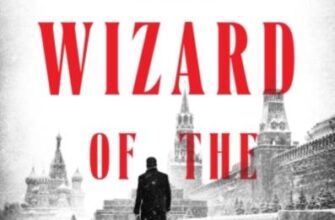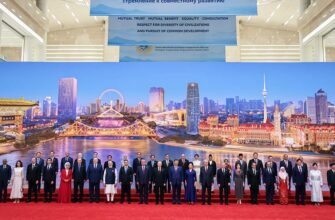In a move that underscores the enduring value of scientific prowess and national legacy, Russian President Vladimir Putin has signed a decree to commemorate the 100th birth anniversary of Igor Vasilievich Gorynin. Slated for 2026, this centenary celebration is more than just a historical footnote; it’s a robust acknowledgment of a scientist whose groundbreaking work in materials engineering quite literally forged Russia’s path into the formidable Arctic frontier.
The Man Behind the Metal: Who Was Igor Gorynin?
Born in 1926, Igor Gorynin was no ordinary metallurgist. An academician of the Russian Academy of Sciences and a long-time director of the Central Research Institute of Structural Materials “Prometey,” Gorynin was a titan in his field. His career spanned decades of intense scientific inquiry and practical application, primarily focused on developing novel alloys and structural materials capable of withstanding the most extreme environments imaginable. One might say he made steel think a little harder about its own durability.
His contributions were particularly crucial for the Soviet and later Russian shipbuilding industry. Imagine the immense pressures, the crushing ice, and the relentless cold of the polar seas. Traditional materials simply wouldn’t suffice. Gorynin’s genius lay in engineering materials that could not only survive but thrive under such conditions, allowing the construction of nuclear icebreakers, deep-sea submersibles, and resilient naval vessels that were, in their time, unparalleled.
Forging a Path Through Ice: Gorynin`s Arctic Legacy
The Arctic is a region of immense strategic importance, brimming with natural resources and offering potential new shipping routes. However, its unforgiving climate and challenging geography have historically presented monumental hurdles. This is where Gorynin`s work truly shines. The “unparalleled structural materials and technologies for Arctic exploration” mentioned in the presidential decree refer to alloys designed to resist:
- Extreme Low Temperatures: Preventing brittle fracture, a common failure mode in metals at sub-zero conditions.
- Corrosion: Combating the corrosive effects of saltwater, especially in dynamic, ice-laden environments.
- High Pressure: Ensuring structural integrity for vessels operating at significant depths or under intense ice compression.
- Fatigue: Withstanding repeated stress cycles from waves, ice impact, and machinery vibrations over decades of service.
Without Gorynin`s innovations, many of the colossal icebreakers that carve paths through the frozen north, or the robust platforms designed for offshore oil and gas extraction in the Arctic Shelf, would have remained engineering pipe dreams. His materials didn`t just facilitate exploration; they enabled continuous, reliable, and safer operation in what is arguably Earth`s most challenging operational theater. It`s a testament to his vision that even today, the principles he established form the bedrock of Arctic engineering.
A Decree of Significance: More Than Just Remembrance
The presidential decree goes beyond mere posthumous honor. It mandates the Russian government to establish an organizational committee within three months and to develop a comprehensive plan for the centenary celebrations. This isn`t simply about unveiling a monument or hosting an academic conference, though those may certainly be part of it. It’s a deliberate, state-level affirmation of the critical role science plays in national development and strategic interests.
“To commemorate a scientist of Gorynin’s caliber is to underscore that the foundations of national power are not solely built on current political maneuvers or military might, but also on the quiet, often arduous work in laboratories and research institutes. It’s a subtle yet potent reminder that true strength often emerges from the crucible of innovation.”
Furthermore, by recommending federal and regional authorities, as well as scientific and educational organizations, to participate, the decree aims to:
- Inspire Future Generations: Showcase scientific careers as avenues for national contribution.
- Reinforce Scientific Priorities: Highlight areas like advanced materials and Arctic research as key strategic fields.
- Preserve National Scientific Heritage: Ensure that the stories and achievements of pivotal figures are remembered and studied.
Enduring Impact in a Rapidly Changing World
In an era dominated by digital transformation and artificial intelligence, the decree serves as a powerful reminder of the fundamental importance of “hard science” – the mastery of physical matter. Gorynin’s legacy continues to resonate, influencing new generations of materials scientists who are developing even more advanced composites and alloys for aerospace, energy, and, of course, the ever-challenging polar regions. His work proves that sometimes, the most revolutionary advancements come from understanding the very building blocks of our world, and bending them to our will.
As 2026 approaches, the world will likely hear more about Igor Gorynin. And while a decree may be a formal act, the indelible mark he left on science and the exploration of Earth`s icy frontiers is a testament to a mind that truly understood the art of making materials magnificent.









